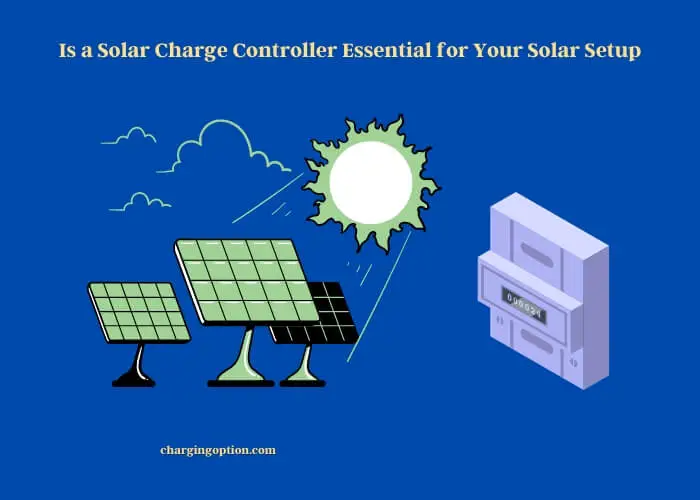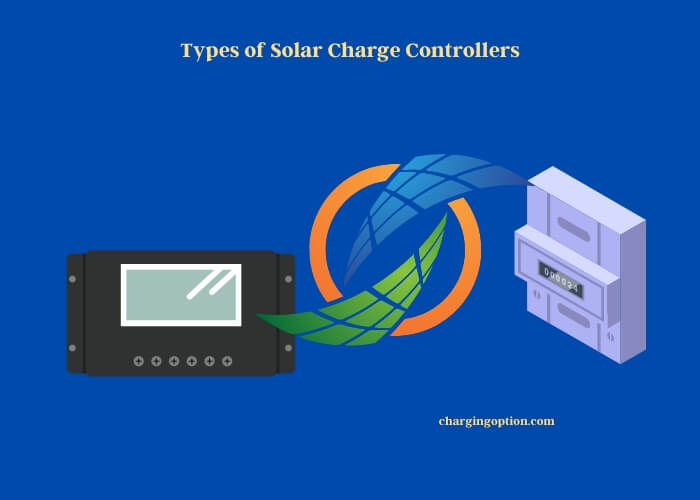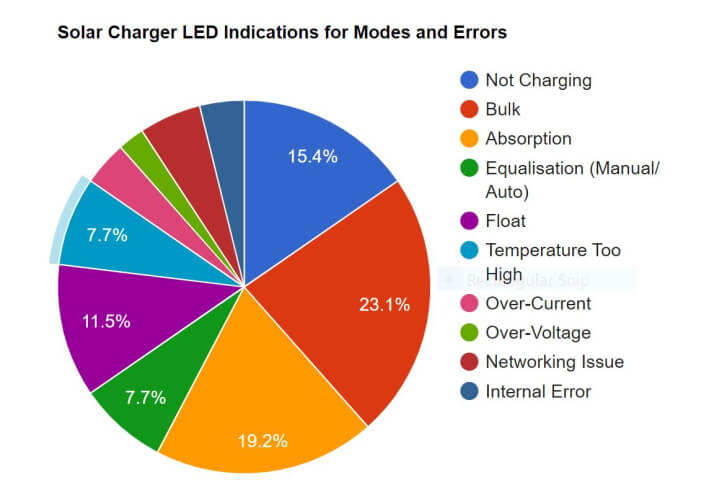Is a solar charge controller necessary? Absolutely, it plays a pivotal role in solar panel systems.
Solar charge controllers are paramount in ensuring the longevity and efficiency of your solar energy system. They serve as gatekeepers, ensuring the battery does not face the detrimental effects of overcharging. Overcharging can significantly shorten the life of a battery, making a charge controller a vital component in prolonging battery life.
Now, you might ask, “do I need a charge controller for a 10w solar panel?” In most situations, any solar panel setup, even as small as 10 watts, can benefit from a charge controller. It’s not just about the power, but about safeguarding your investments and ensuring efficiency.
One might wonder how to go about selecting the right solar charge controller. There are different types available, such as the MPPT charge controller, which is known for its efficiency. It’s essential to choose based on the specific requirements of your system and the voltage, like if you’re dealing with a solar charge controller 12v.
Functionally, these devices do more than just protect from overcharging. They can also prevent reverse currents, which can drain batteries at nighttime. The settings of a solar charge controller are also crucial; they can be adjusted based on your specific energy needs. For those who want to monitor their system’s performance, understanding how to read a solar charge controller is essential, as it provides insights into the energy flow and battery status.

For more in-depth insights and details on this subject, we invite you to read the detailed article below.
Is Solar Charge Controller Necessary?
So, you’ve taken the plunge into the solar world, or maybe you’re just dipping your toes. Whatever the case, it’s great that you’re here! Let’s chat about a lesser-known, yet super crucial component of the solar universe: the solar charge controller.
Basics of Solar Energy Systems
Solar power has a pretty cool process. Sunlight hits solar panels, gets converted into electricity, and voilà! Your home has power. But wait, there’s a bit more behind the scenes.
What Makes a Solar System Tick?
Solar panels absorb sunlight. This energy then flows down into an inverter that changes this power into a usable form for your home. Batteries store any excess energy for those sunless times. Pretty neat, right?
What is a Solar Charge Controller?
Picture this: a security guard who ensures only the right amount of electricity enters a battery. That’s our solar charge controller!
Defining the Guard
This controller is like the middleman between the solar panels and the batteries. It makes sure batteries don’t get overwhelmed (or underwhelmed) by the power they receive.
Its Role in the Bigger Picture
Imagine a party where the guests are the electricity. Now, wouldn’t it be a mess without someone managing the door? That’s your controller, ensuring no overloading or underloading happens. It’s the unsung hero of the solar world.
Primary Functions of the Controller
Protection from Overcharging
Think of your battery as a cup. Now, would you keep pouring water even if it’s full? The controller ensures that no excess power spills over.
Stopping Reverse Current Flow
It’s nighttime, and your solar panels are chilling. But without a controller, the stored energy might just wander back to the panels. Kind of like a dog chasing its tail, right?
Optimizing Charging in Different Lights
Sunlight can be a fickle friend. Bright at times, hidden at others. Your controller’s like a smart chef, making the best dish out of the ingredients at hand.
Types of Solar Charge Controllers
Pulse Width Modulation (PWM) Controllers
This is the older cousin in the controller family. It’s like adjusting the flow of water from a tap. It reduces the power flow when the battery is nearly full and increases it when it’s low.

Maximum Power Point Tracking (MPPT) Controllers
Think of this as the younger, tech-savvy cousin. It continuously adjusts to ensure maximum power reaches the batteries. Like a pro DJ adjusting the music to keep the party hopping!
Importance of Using a Charge Controller
Prolonging Battery Lifespan
Wouldn’t you prefer your stuff to last longer? Same with batteries. A controller ensures they live a long, fruitful life.
Ensuring Efficient Energy Use
Ever tried filling a bottle in a hurry and spilled most of it? Without a controller, energy can get wasted similarly.
Guarding Your Solar Investment
Controllers keep the overall system in check. It’s like having insurance for your precious solar setup.
Technical Aspects of Charge Controllers
Different Technical Specifications and Their Relevance
| Specification | Relevance |
| Voltage ratings | Match it with your battery system’s voltage. |
| Current ratings | Relates to the size and quantity of solar panels. |
| Temperature compensation | Adjusts charging based on battery temperature. |
Real-world Comparisons
Here’s a small visualization to help:

This chart compares the power harvested under different conditions for PWM and MPPT controllers. It displays:
- PWM under ideal conditions: 67.6 watts
- MPPT under ideal conditions: 90 watts
- MPPT with increased temperature: 79.2 watts
Adjusting and Monitoring Your Charge Controller
Overview of LED Indications
Operation Mode
| Operation Mode | Bulk LED | Absorption LED | Float LED |
|---|---|---|---|
| Not Charging | Blinking Blue | Off Yellow | Off Green |
Fault Mode
| Fault Mode | Bulk LED | Absorption LED | Float LED |
|---|---|---|---|
| Charger Temperature Too High | Off Blue | Off Yellow | Blinking Green |

Determine the Right Controller Size for Your Setup
Case Studies: Successful Solar Installations with Charge Controllers
Residential Setups
John from Texas shared how his setup with a controller saved his batteries during a particularly sunny month. It was like having a shade in a desert!
Commercial Installations
A mall in California credited its efficient solar system to a robust charge controller setup. Imagine a mall running smoothly, all thanks to our unsung hero!
Potential Pitfalls Without a Controller
Battery Damage Scenarios
Skipping on a controller? It’s like not wearing sunscreen on a sunny beach day. You might just get burned (or in this case, your batteries might).
Energy Loss Instances
Imagine losing all your saved-up candies. That’s how your solar system feels when energy gets wasted.
FAQs
Do I Need a Solar Charge Controller for My American Farmworks Solar Fence Charger?
A solar charge controller is a crucial component for the optimal functioning of your American Farmworks Solar Fence Charger. It regulates the energy flow from the solar panel to the battery, extending its lifespan. Thus, by ensuring the proper charging process, a charge controller enhances the overall performance and efficiency of your solar fence charger. Embracing the benefits of solar fence chargers includes cost-effective energy generation and environmentally friendly power supply for your farm.
Do Both Anker 21W Solar Charger and Goal Zero Require a Solar Charge Controller?
When exploring anker vs goal solar chargers, it’s important to consider the need for a solar charge controller. While the Anker 21W Solar Charger does not require one, the Goal Zero does. This controller ensures efficient energy conversion and protects your device from overcharging. So, depending on your preferred solar charger, consider the necessity of a solar charge controller.
How Does the Distance Between Solar Panels and Inverter Affect the Need for a Solar Charge Controller?
When it comes to improving solar panel to inverter placement, the distance between them plays a vital role in the need for a solar charge controller. The longer the distance, the higher the chances of voltage drop, leading to inefficiencies in power conversion. Optimal placement reduces this drop and minimizes the requirement for a charge controller, ensuring maximum energy generation from the solar system.
What Are MPPT Charge Controller Settings?
MPPT (Maximum Power Point Tracking) charge controller settings allow you to optimize the energy harvested from solar panels and increase the efficiency of your solar system. Adjusting these settings correctly is vital to ensure maximum solar energy conversion and prolong battery life.
How Many Charge Controllers Do I Need?
The number of charge controllers you need depends on the size and voltage of your solar panel array and the voltage of your battery bank. It’s essential to match the input voltage from the solar panels with the voltage of your battery to ensure efficient charging.
Are There Specific Charge Controller Settings for AGM Batteries?
Yes, AGM (Absorbent Glass Mat) batteries have specific voltage and current settings to ensure they are charged safely and efficiently. It’s crucial to refer to the battery’s manufacturer guidelines when configuring the charge controller settings for AGM batteries.
Why Is the Solar Charge Controller Battery Type Setting Important?
The battery type setting on a solar charge controller ensures that the battery is charged according to its specific needs. Different battery types, like lead-acid, lithium-ion, or AGM, have distinct charging requirements, and setting the controller correctly prevents overcharging and enhances battery lifespan.
Can You Provide Solar Charge Controller Instructions?
While I can offer general guidance on solar charge controllers, it’s always best to refer to the specific user manual or manufacturer’s instructions that come with your device. This ensures that you are setting up and using the controller safely and effectively.
What Size Solar Charge Controller Do I Need?
The size of the solar charge controller you need is determined by the voltage of your solar panel array and the current output (in amperes). It’s vital to choose a charge controller that can handle the maximum output current of your solar panel system to ensure efficient charging and system safety.
How Do I Choose a Solar Charge Controller?
Choosing a solar charge controller involves considering the voltage of your solar panels and battery bank, the total wattage of your solar system, and the type of battery you are using. It’s also beneficial to decide between PWM (Pulse Width Modulation) and MPPT (Maximum Power Point Tracking) based on your budget and efficiency needs.
Summary
By now, you’ve probably realized how big a deal this small device is. Solar charge controllers are like the bouncers of the solar energy world. They protect, manage, and ensure everything runs smoothly. So next time you gaze at your solar panels, remember the silent guardian that keeps everything in check!
Did you find our blog helpful? Then consider checking:
